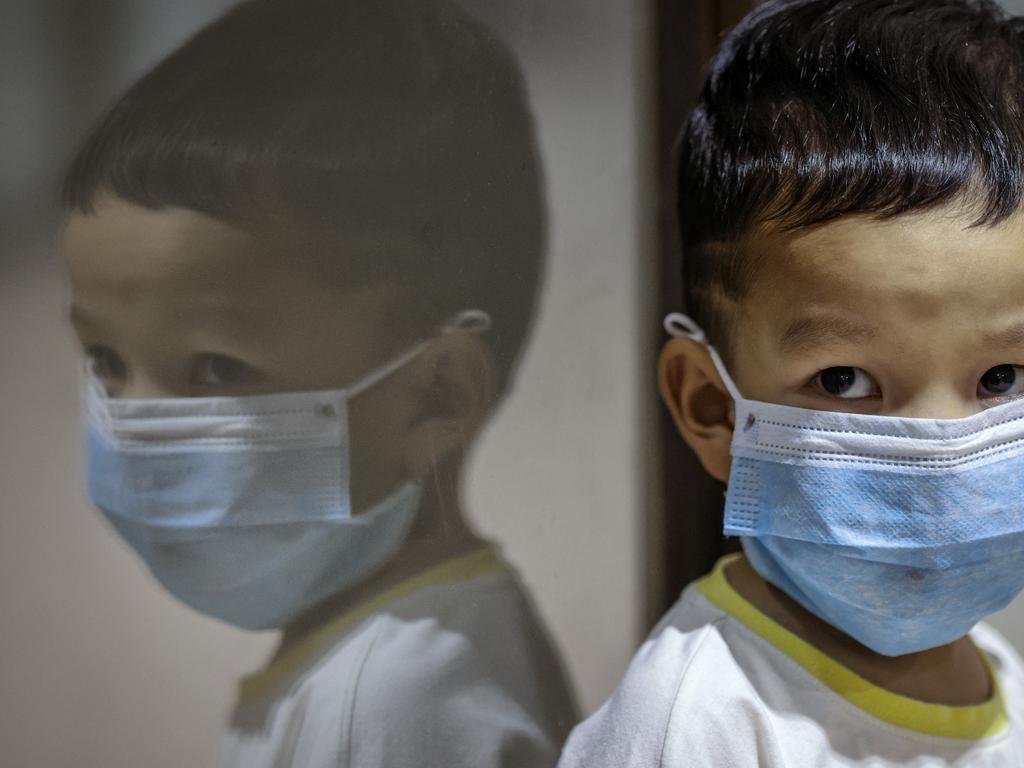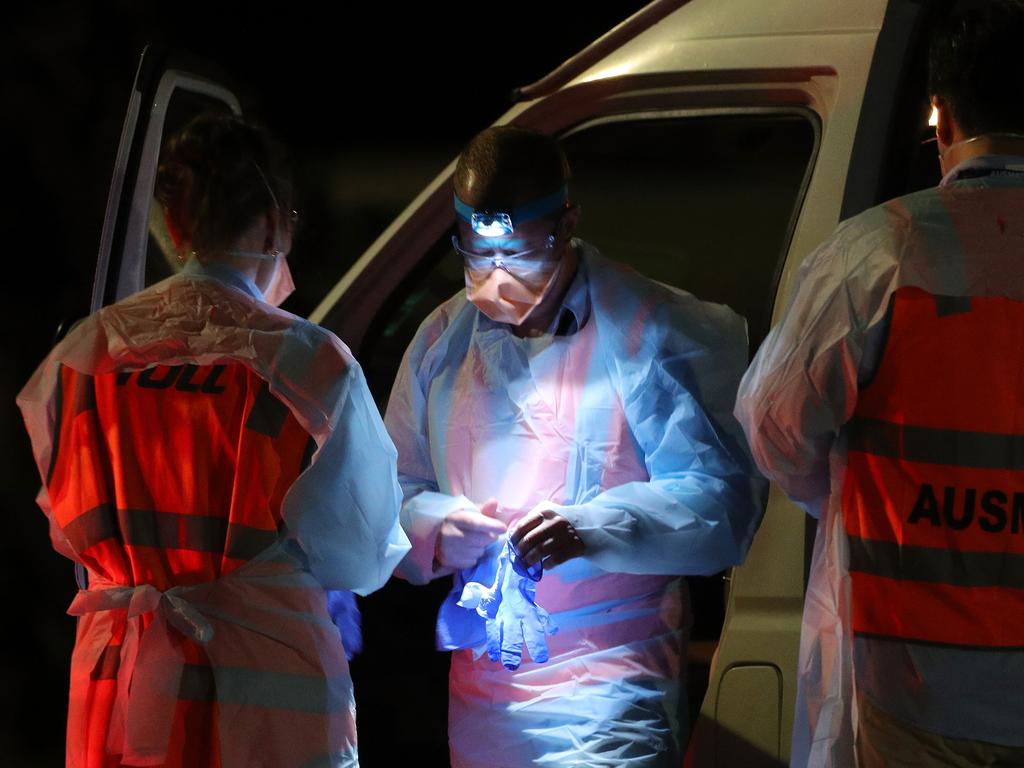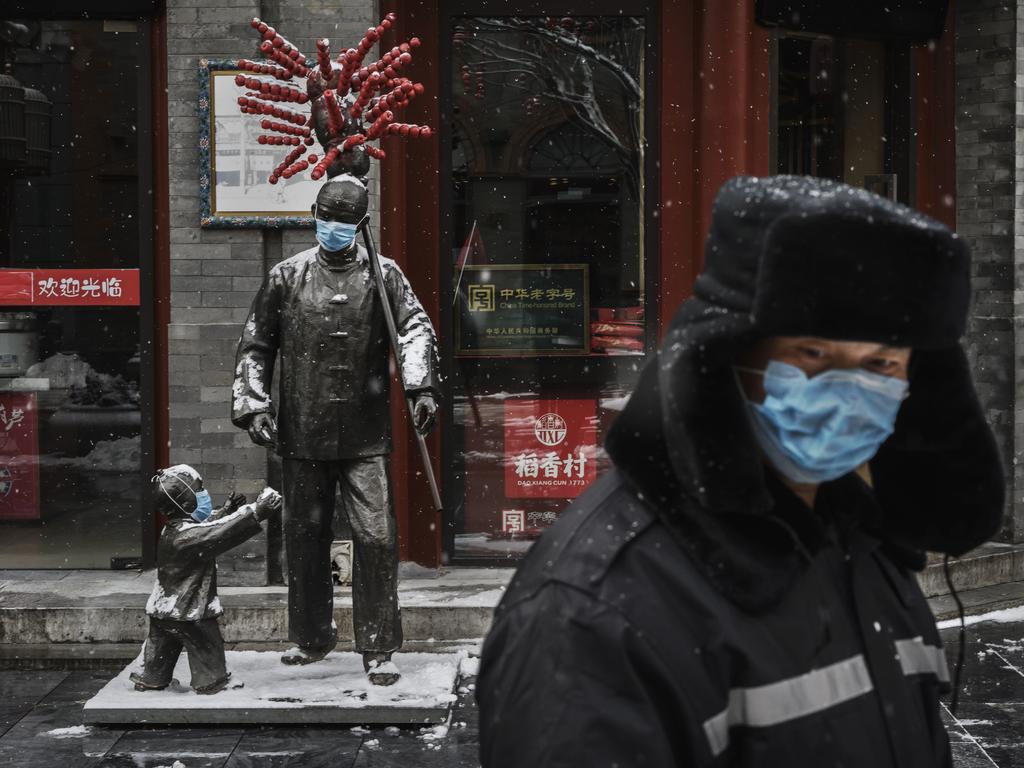Scientists race to answer key questions about spread of coronavirus
Experts around the world are racing to answer five key questions that will determine just how deadly and devastating coronavirus will be.
Scientists and medical experts are frantically working to determine the answer to five key questions in relation to the deadly coronavirus spreading across China and around the world.
Incubation, communication, the rate of infection, mutation and damage caused are essential to limit casualties and prevent the virus spreading.
However more than a month into the outbreak that began in Wuhan, China, medical authorities still don’t have more than a basic understanding of the disease.
And uncertainty feeds fear.
But the broad boundaries of the virus’ behaviour are being mapped and the level of understanding is slowly growing.
Associate Professor Sanjaya Senanayake of the Australian National University (ANU) Medical School is an infectious disease specialist. He spoke with news.com.au to help define just how much is known about 2019-nCoV’s unknowns, and what they mean.

Researchers are racing to answer five questions. These will help quantify the coronavirus’ actual threat and, therefore, the necessary means of containment, prevention and treatment.
• How long does it take to incubate?
• What means of communication does it employ to infect new hosts?
• What is its rate of infection, and how quickly can it spread?
• What damage does the virus do to its hosts?
• And what is its rate of mutation, with its associated ability to resist treatment, acquired immunity – and change the answer to every question asked above?
INCUBATION
So far, the Wuhan virus seems to take anywhere between two and 14 days to establish itself within a new host. A report in the New England Journal of Medicine says 95 per cent of cases assessed take 12.5 days.
In comparison, seasonal flu takes one to four days.
“The virus needs time to replicate itself in sufficient numbers before it starts causing damage to human tissue,” Dr Senanayake says.
“This manifests as symptoms, such as a sore throat or runny nose. That is what the incubation period allows. Some viruses are more effective than others at this and have shorter incubation periods.”
Determining this time frame has important implications for controlling an outbreak. It establishes how long people must be quarantined. Simply put, you cannot isolate the spread of a virus if you’re not sure how long it takes to manifest itself.
RELATED: What are symptoms of killer coronavirus?

COMMUNICATION
Another critical piece of information is what means of transport a pathogen uses.
The terrifying Ebola virus has a very high mortality rate. But you cannot catch it unless you come into contact with a victim’s bodily fluids.
The common cold is an annoyance. But you can catch it through merely walking into a cough-cloud a sufferer leaves behind.
Does the Wuhan virus need droplets to survive a transfer? Can it linger in the air? Does it inhabit faeces?
“We don’t necessarily know the answer to this,” Senanayake says. “But while it is multiplying and replicating itself, it may be present in sufficient numbers to be shed in the likes of respiratory secretions or faeces, even before symptoms occur.”
While this startling ability is suspected, it is yet to be confirmed. If true, containing the virus could prove to be extremely difficult. There would be no way to tell who was spreading it.
Typically, airborne viruses are the hardest to contain. You can become infected by merely walking through a room an infected person has visited.
Those carried by droplets or faeces – as most coronavirus types are – can be countered through rigorous hygiene. And a cough or fever is an easily identifiable threat.
RELATED: Follow updates on the coronavirus outbreak

RATE OF INFECTION
Epidemiologists assign viruses a reproduction number, R0. This tells us how many people a single infected host can infect. The 1918 Spanish flu pandemic that killed at least 20 million people, for example, had an estimated value of between 1.4 and 2.8.
Early indications are the 2019-nCoV R0 is in the vicinity of 2.2.
“But it does not tell us how quickly it spreads,” Senanayake says. “We need to know the ‘serial interval’ (SI) for this. The ‘serial interval’ is the variable that tells us how long it takes from initial infection to a second person becoming infected. The serial interval for this coronavirus on initial estimates is much less than flu.”
And that means this coronavirus is spreading fast.
One study notes the reported number of cases is doubling every week, giving 2019-nCoV a serial interval of 7.5. But, as it is believed the incidence of the disease is significantly under-reported, this figure is unreliable.
DAMAGE DONE
How does 2019-nCoV harm its victims?
“We don’t know the answers to this for this coronavirus,” Senanayake says. “But a virus can cause damage in two ways broadly speaking: firstly, the virus itself can damage various organs directly. Secondly, our own immune response to the virus can be so aggressive that it ends up harming us – for example a ‘cytokine storm’. This can happen in viral infections like dengue.”
Early reports suggest the most severe cases of the Wuhan virus are experiencing exactly that.
It was also a feature of the SARS and MERS coronavirus.

Cytokines act as a body’s molecular messengers. They direct the immune system reaction to invasive disease, but also prevent normal cellular processes from triggering a response.
Some viruses dramatically ramp-up the body’s production of cytokines. This can cause uncontrolled inflammation – such as pneumonia – leading to respiratory shock and organ failure. And this inflammation makes the body susceptible to secondary bacterial infections.
RATE OF MUTATION
Measles and chickenpox are incredibly infectious. Fortunately for us, they do not mutate often. Which is why vaccination campaigns have been so successful in limiting their deadly impact.
Seasonal flu and the common cold, however, are continually evolving.
Which is why last year’s flu vaccine won’t work next year.
“The seasonal flu viruses undergo mutations frequently,” Senanayake says. “Small changes are called ‘antigenic drift’ and account for more severe flu seasons than usual because one of the flu virus strains has diverted from the vaccine strain.
“A big change in the flu virus make-up is called ‘antigenic shift’. This enormous genetic change is enough to cause a pandemic because a lot of people will have no immunity whatsoever to the new virus.”

At the moment, the Wuhan virus falls fits neither of the above.
A coronavirus is a type of virus typically found in animals. Sometimes – though rarely – it can be transmitted to humans.
As this is an entirely new virus, its mutation rate is, at the moment, one of the least of our unknowns. Our bodies first have to deal with the shock of being exposed to new virus’ existence.
“Even if a deadly infection like the Spanish flu virus circulated, while it would cause large numbers of casualties initially, those left behind would be immune to it and the virus would be much less of an issue afterwards,” Dr Senanayake says.
And that’s when its evolutionary speed will come into effect.
Jamie Seidel is a freelance writer | @JamieSeidel



